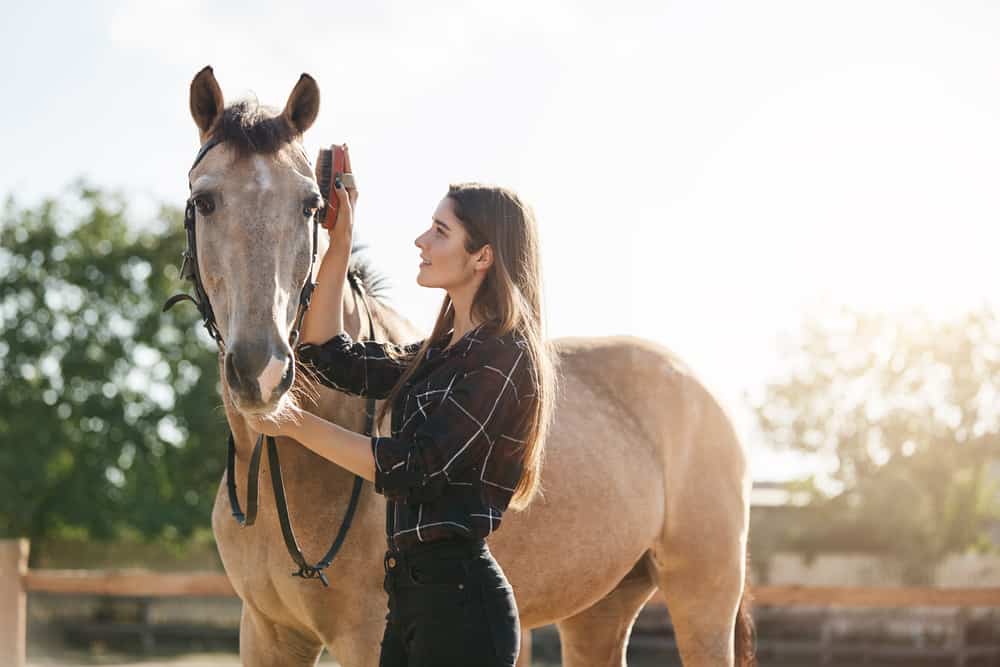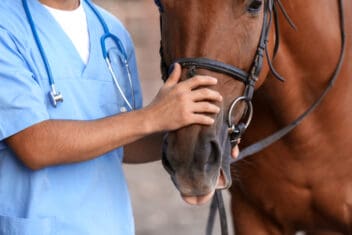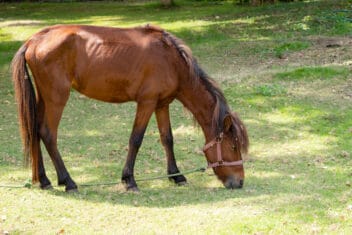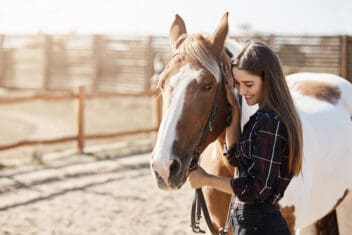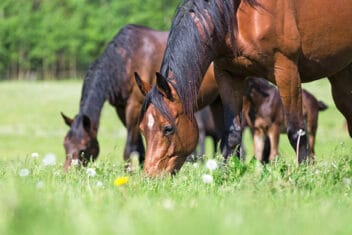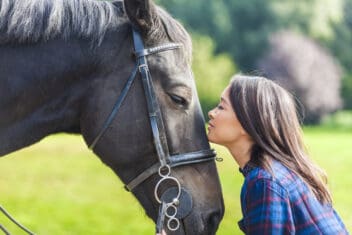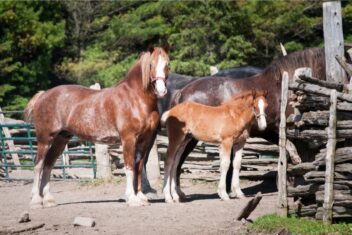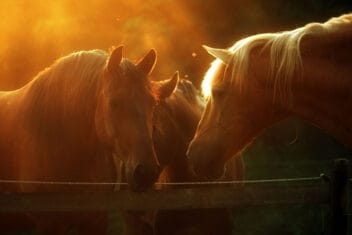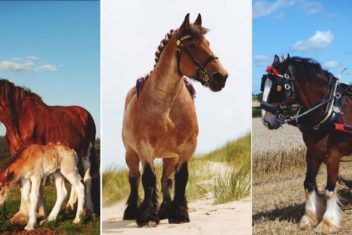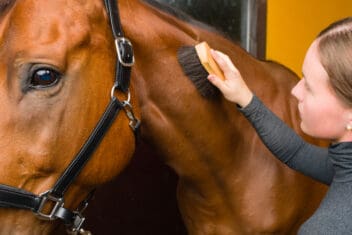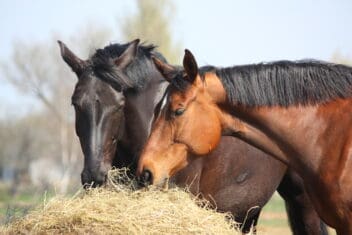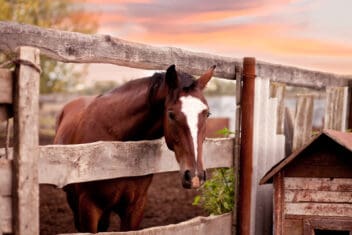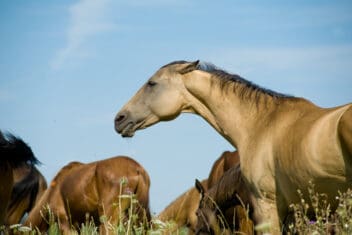If you love horses, you’ve probably dreamed about owning one for your entire life. Now that you’re in a position to have one, you’re probably incredibly excited about the prospect. And maybe you’re a little overwhelmed. That’s understandable. There’s a lot to know about taking care of horses, and I’m going to cover the basics here.
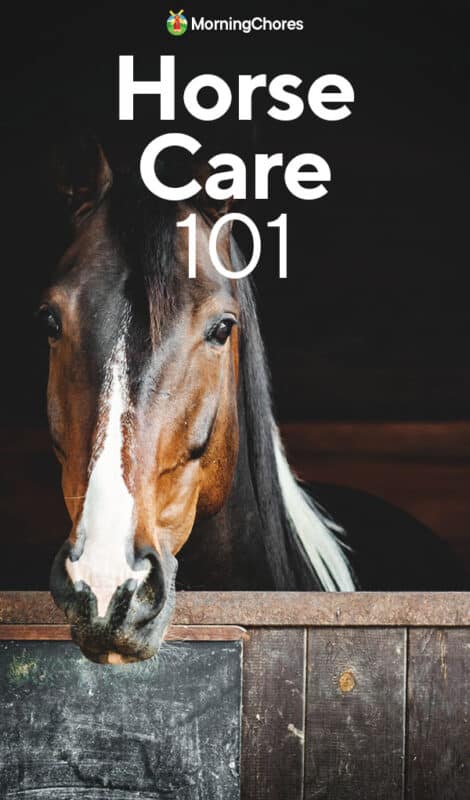
You Got Yourself a Horse: Now What?
The relationship between the horse and the carer is the most important aspect of horse care. It takes absolute precedence over everything else. Ideally, spend as much time with your horse as possible. You and your horse should be inseparable. This isn’t a “requirement” – it’s imperative.
Some ancient peoples would spend every waking moment with their horses, whether they were in the saddle, sitting next to them, or sleeping by them. This created the kind of bond that gave rise to the myth of the centaur.
These people were never without their horses. They were constantly in tune with their companions. They become closer than friends or family. You will become an extension of your horse, and in turn, it becomes an extension of you. Above food, stalling, cleaning, water, and the rest, spending time with your horse is most important.
This isn’t passive time like sitting next to your kid on the couch, with you zoning out on your phone while a movie plays. You need to be utterly in the moment, giving them your full attention. This needs to happen several times over the course of every day.
If you don’t want this kind of a rapport or can’t devote the time, then you might want to ask yourself if you’d be better off with a different kind of animal.
1. Feeding
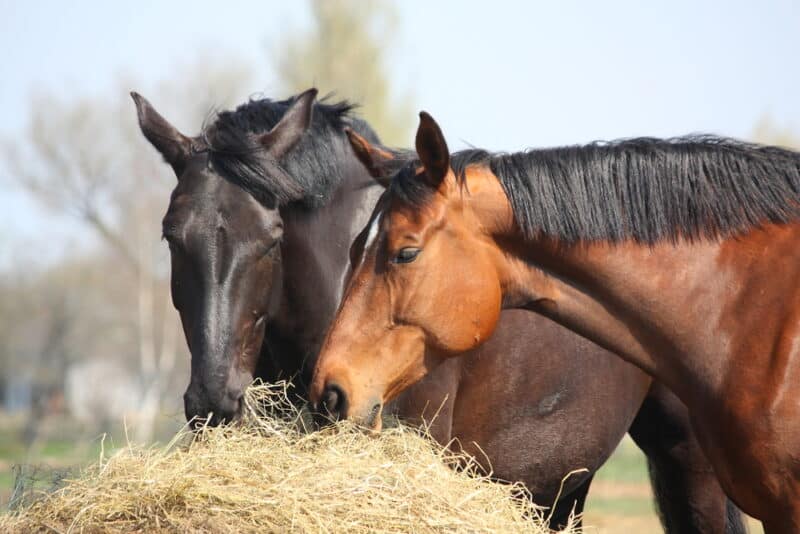
Horses, cows, sheep, and rabbits are grazers. This means that they eat constantly over the course of the day. As you can imagine, this means that your horse is going to eat a LOT. On average, a horse needs to eat about 2% of its body weight in forage every day.
Forage includes hay and other dry roughage like grass and cereal grains. Hay should make up the cornerstone of their diet, and they’ll need about 20lbs of it daily for an average-sized horse with an average activity level. In addition to grain, some people offer beet pulp and a mixture of vitamins and minerals.
In terms of the type of hay you should get, most horse owners use a combination of alfalfa and Timothy hay. But there are lots of other options out there such as orchardgrass and oat hay.
Some people like to make mashes for their horses as additional dietary supplements. Talk to your vet before making anything like this just in case your horse is prone to belly issues.
Horses can have food sensitivities just like any other individual. Their digestive systems can be as sensitive. One might be able to eat a vegetable with no problem, but another might develop painful gas or bloat.
Keep a reliable horse vet’s number on speed dial and don’t hesitate to contact them if your horse shows any sign of a GI slowdown. These can kill horses quickly if left untreated. Horses can’t vomit, so any tummy issues can become deadly left untreated.
Also, provide a salt lick so your horses have reliable access to vital salts and minerals. For more detailed information on how to feed your equine pal, read our comprehensive guide.
2. Water
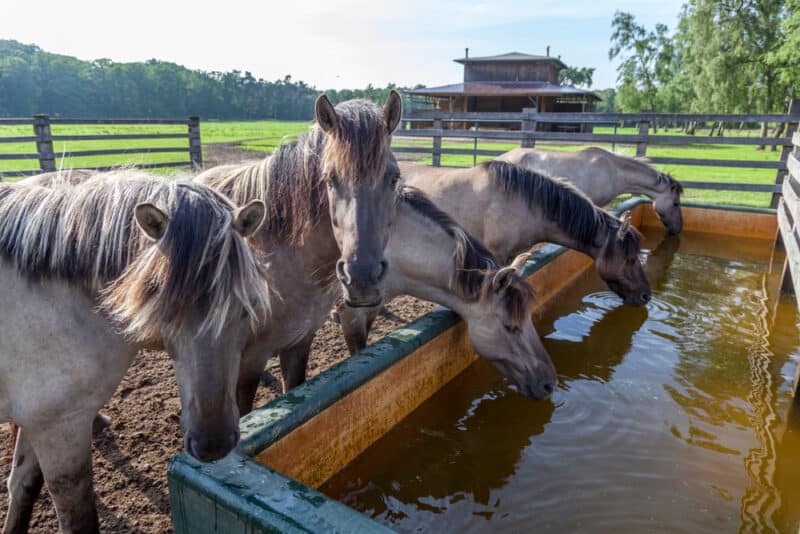
Horses are large animals and require a great deal of drinking water. In fact, the average horse can drink anywhere from six to 15 gallons of water every day. They can drink more than that if they’re running or working hard, especially in hot weather.
You’ll need to provide your horse with a source of fresh, clean drinking water. There are many options, from troughs that you’ll have to fill to automatic waterers that horses can press their noses into to start the flow of water. Some people rely on buckets, and others run canals or underwater pipes through their property to feed ponds.
Whichever method you choose, keep in mind that you can never just set it and forget it. You’ll need to check at least once a day (more if you’re using buckets) to ensure that your horse can access fresh water.
If you live in a colder climate, make sure your horse’s water source doesn’t freeze. You can buy heated horse troughs, but also make sure that the source of their water doesn’t freeze over either.
Test your water a few times a year to ensure that it’s clean, and hasn’t become contaminated with any potentially dangerous pathogens.
3. Provide Shelter
You have several options when providing your horse with shelter. Most people who ride competitively or daily keep their horses in stalls to prevent them from getting injured and to keep them clean. Some people who either don’t ride or don’t ride as often opt to keep their horses outdoors full time.
Either way, you need to provide your horse with a safe, clean space where they can get out of the elements.
Indoor Shelter
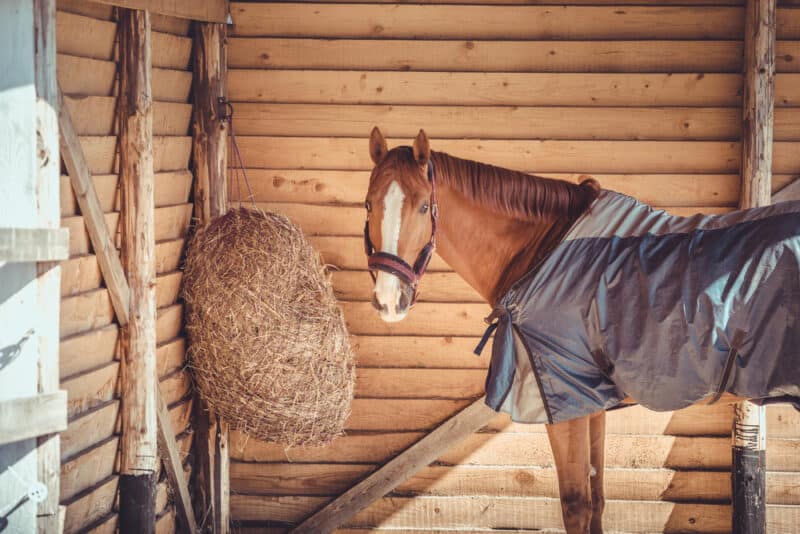
The average horse should have a stall that’s 10-12 square feet. Larger breeds like Clydesdales will need larger enclosures. But most horses appreciate a fair bit of room to move around in. You really can’t go too large.
They should be able to turn around and lie down comfortably, with plenty of bedding for comfort and warmth. The ceiling should be at least 10-12 feet high, with a 10×8-foot doorway.
If you have only one horse, have a stable with at least two stalls. This allows you to move the horse between them for care, maintenance, and safety.
If there are predators such as wildcats present, keep the stable as close to the house as possible, and protect it well. Double-fencing is ideal, especially if the outer fence is cat-proofed and electrified.
Fill each stall with some sort of bedding. In the old days, people used straw, but most horse owners have turned to pellets or wood shavings because they’re more absorbent and easier to work with.
You or someone you hire should “muck out” the stall every single day. This means taking a shovel and removing poop and soiled bedding from their enclosure. To do this effectively, transfer the horse from one stable into the other. If you don’t have a second stall, turn them out into a field or tie them up in crossties while you work.
Once secured, clean out the stall. Then, put down a fresh layer of bedding before bringing the horse back in.
Check on your horses consistently to make sure they’re okay. They cannot speak in a human tongue to let you know how they’re doing, so it’s up to you to do so.
Outdoor Shelter
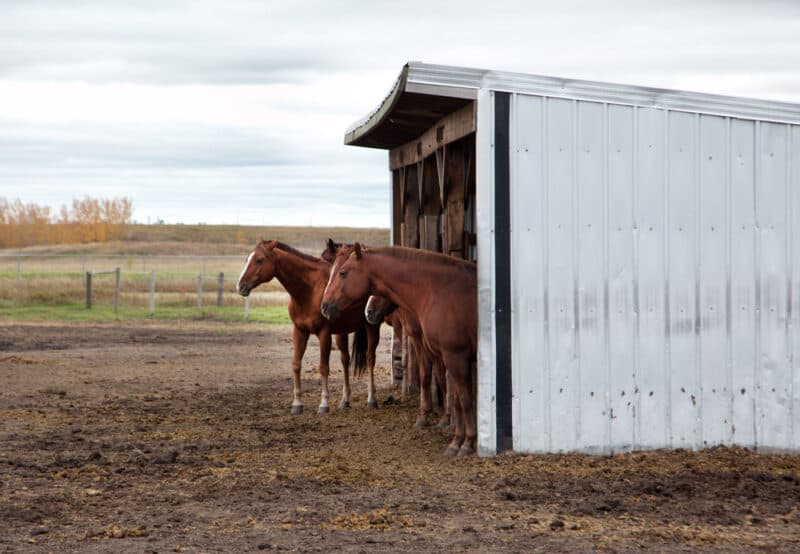
If you keep your horse outdoors full-time, they need a shelter where they can hang out when it is raining, snowing, or windy. This should be larger than a stall and should be completely open on one end and closed on the other three sides.
You should situate the shelter so that it is turned away from western exposure so the horse can seek shelter during the hottest part of the day. Alternately, you can build a second shelter that faces the opposite direction so the horse can choose the best option.
Your shelter’s location depends on where you live, of course. If you have a large paddock or pasture, you might also want to offer a run-in shelter at the opposite end.
4. Pasture for Exercise (and to Avoid Going Stir Crazy)

Your horse should have access to a safe outdoor pasture or paddock area where it can stretch its legs. This should be well fenced in, and free from anything that could potentially hurt it. Look for things like old machinery, bits of scrap metal, etc. Horses love to roll around in the grass, and can get seriously injured if there are sharp bits buried in the soil.
Make sure that the entire area is clean and well-kept, with plenty of safe edibles for your horse to munch on. Familiarize yourself with plants that are toxic to horses and keep the entire area free from those.
A horse that’s been stabled for too long will chew its gate. If you see gnaw marks, you’ll know that your horse needs a lot more exercise.
Chewing and pulling on gate enclosures while inhaling sharply is known as aerophagia. This is more commonly called “cribbing.” It’s an obsessive-compulsive behavior done by horses that are quite simply going mad from being cooped up for too long.
If you wouldn’t love to be stuck in a small room in what’s basically solitary confinement, then don’t do it to an animal. If your horse is cribbing, that’s a strong sign that it needs to be outdoors more of the time. Get a good coat for it if it’s cold outside, and set it out to pasture. It’ll be a lot happier running around on its own all day.
A quick note: When riding or walking your horse to the stable or barn, try to do so at a merry trot, with enthusiastic, encouraging words from you. This will make the horse associate his “home” with pleasant feelings, making him more eager to go back in at the end of a romp.
5. Hygiene
When horses have been out running or working hard, you’ll need to wipe them down and give them a good brushing. If it’s cold, put a blanket on them.
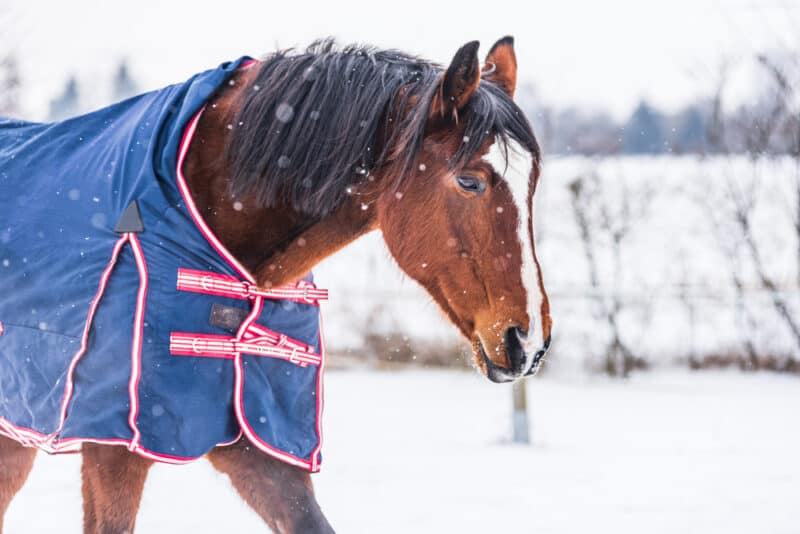
Just don’t ever put a blanket onto them when they’re hot and sweaty: the perspiration will turn cold under the blanket and can cause them harm. For more tips on blanketing, check out our guide.
Check their hooves every single day and clean out detritus that may accumulate. Also, use this time to look for potential injuries like cuts, or splits in the hooves. A lot of people don’t believe in keeping their horses shod, e.g. keeping shoe horses on.
Talk to your farrier and use your own intuition in this regard, taking into account what your horse’s day-to-day activities are like. Horses that ride cross-country, on hard surfaces or are jumping usually need some sort of supportive footwear.
There are countless books dedicated to the health and wellbeing of a horse’s feet. All we can say here is that the horses’ feet should be cared for on a regular basis. Please do a ton of research on this topic to further educate yourself.
Additionally, make sure you’re on good terms with your farrier so they can help take care of hoof filing and maintenance.
6. Companionship
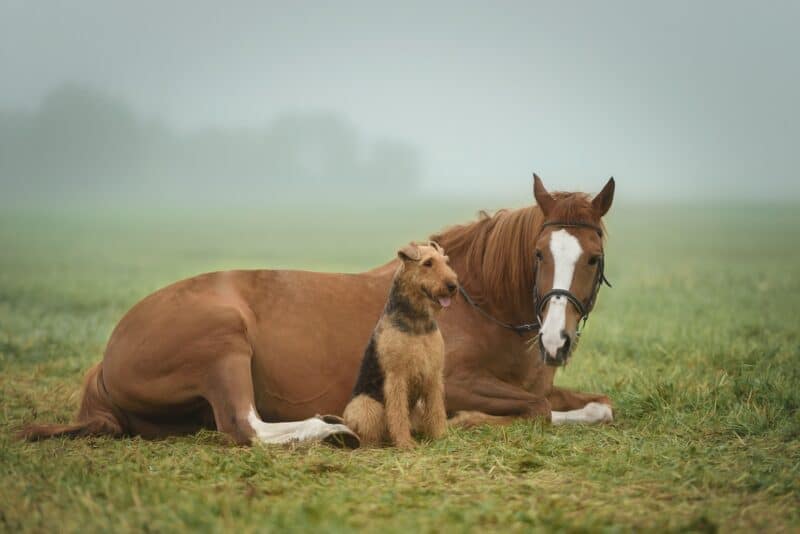
This is an often-overlooked part of horse care.
An only horse is a lonely horse. These are herd animals who thrive with companionship. If you’re able to have more than one horse, please do so. They’ll be a lot happier together. Alternatively, if you can only have one, provide it with other animals for company. They do well with goats, ponies, donkeys, and even dogs.
Our guide to horse companionship has lots more information.
And of course, spend a ton of time with your horse.
Finally, expand your knowledge on horse care. We’ve only touched the surface. Read as much as you can, learn from experienced horse people and live with horses as much as you can to determine your own way of doing things.
There’s always, always more to learn. You could work with horses for 100 years and still have more to learn about them. Every horse is unique, and though their basic needs might be similar, there is so much to be taken into account.
And most importantly, love your horse like it’s an extension of your own soul.
